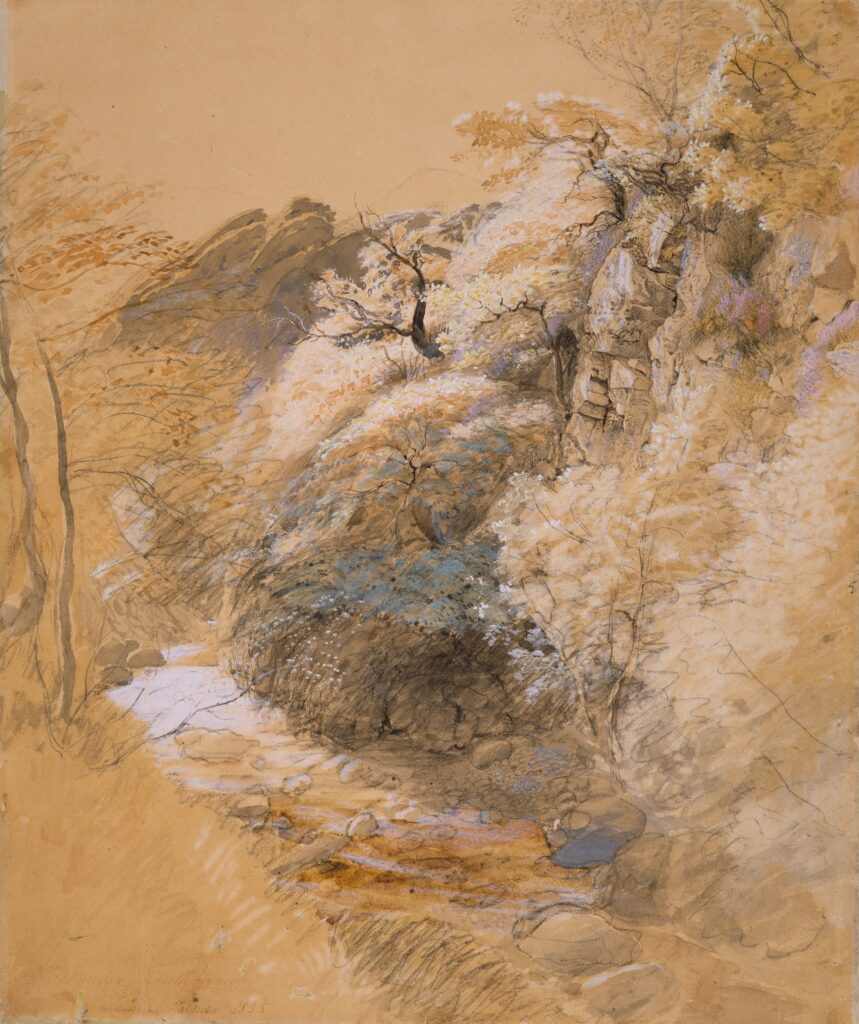Artist Eduardo Kac’s groundbreaking hologram artwork, ‘Ágora,’ is set to make an unprecedented journey into space aboard the Vulcan Centaur rocket. Encoded on a delicate sliver of glass, Kac’s creation is aptly referred to as a “holopoem.” The artist’s pioneering endeavor poses a thought-provoking question – will future beings in space stumble upon this ethereal artwork? For Kac, the placement of ‘Ágora’ in space signifies the establishment of a dynamic and public artistic space. This venture into interstellar terrain marks a natural progression for Kac, who has previously explored unconventional artistic avenues such as the subversive Porn Art Movement and advancements in digital technology. With ‘Ágora,’ Kac unlocks a new realm, expanding his artistic repertoire to include telepresence, robotics, and bio-art. As ‘Ágora’ embarks on its extraterrestrial odyssey, it joins a payload that holds a lasting tribute to notable individuals, further encompassing the realm of science fiction and embodying the advancements in space exploration and technology.

Artist Eduardo Kac’s hologram artwork ‘Ágora’
Artist Eduardo Kac’s hologram artwork, titled “Ágora,” is set to be launched into space on a Vulcan Centaur rocket. This groundbreaking artwork marks Kac’s first foray beyond Earth, expanding his artistic exploration to the realm of outer space. The artwork will be encoded on a sliver of glass, forming what Kac refers to as a “holopoem.” This unique combination of holography and poetry creates a captivating and thought-provoking piece that challenges traditional notions of art and its placement.
Holopoem encoded on a sliver of glass
The holopoem, “Ágora,” is a remarkable blend of visual and literary artistry. Kac’s creation takes the form of a hologram, projected onto a sliver of glass, encapsulating the essence of the artwork. This fusion of technology and artistic expression showcases the progression of Kac’s work, pushing the boundaries of creativity and innovation. By using glass as a medium for the holopoem, Kac adds an element of fragility and uncertainty to the artwork, enhancing its overall impact.
Uncertainty if hologram will be discovered in space
One intriguing aspect of “Ágora” is the uncertainty surrounding its discovery in space. As the hologram travels beyond Earth’s atmosphere, there is no guarantee that future beings or civilizations will encounter it. This notion of uncertainty adds a layer of mystery and anticipation to Kac’s artwork. It prompts contemplation on the fleeting nature of artistic endeavors and the possibility of their transcendence across time and space.
Kac sees artwork placement in space as creation of public space
Eduardo Kac perceives the placement of his artwork in space as the creation of a public space. In his view, by extending his artistic expression beyond the confines of galleries and traditional exhibition spaces, Kac invites a wider audience to engage with his work. The vastness of space becomes the backdrop for this public space, offering a unique and awe-inspiring setting for artistic contemplation.
Kac’s history of venturing into public space with Porn Art Movement in Rio de Janeiro
Eduardo Kac’s venture into public space with “Ágora” is not his first experience pushing artistic boundaries. In the late 1970s, Kac co-founded the Porn Art Movement in Rio de Janeiro. This subversive movement aimed to challenge societal norms and break free from conventions through provocative and often controversial art. Kac’s involvement in this movement showcased his willingness to challenge established norms and explore alternative approaches to artistic expression.
Kac’s exploration of digital technology and holography
After his involvement in the Porn Art Movement, Eduardo Kac delved deeper into the realm of digital technology and holography. Between 1983 and 1993, Kac created 24 holopoems, marking a significant shift in his artistic practice. Through these explorations, Kac began to integrate technology into his works, blurring the boundaries between the physical and virtual worlds. This period of exploration laid the foundation for his later expansions into telepresence, robotics, and bio-art.
Expansion of Kac’s artwork to include telepresence, robotics, and bio-art
Eduardo Kac’s artistic journey extended beyond holography, leading him to embrace other forms of technology and interdisciplinary practices. Through the integration of telepresence, robotics, and bio-art, Kac expanded the scope of his artwork and its impact on the audience. These multidisciplinary approaches allowed Kac to create immersive experiences, inviting viewers to actively engage with his art and become part of the creative process.

Ágora as Kac’s first work beyond Earth
“Ágora” holds a significant place in Eduardo Kac’s artistic journey as it marks his first work to venture beyond Earth. While Kac had previously planned works for the moon’s surface, “Ágora” represents a new milestone in his exploration of the cosmos. This leap into the unknown signifies a bold step forward for Kac, expanding his artistic expression to reach audiences beyond the confines of our planet.
Connection between ‘Ágora’ and science fiction
The connection between Eduardo Kac’s “Ágora” and science fiction is compelling, as it aligns with recent advancements in space exploration and technology. As humanity continues to push the boundaries of space travel, Kac’s artwork serves as a reflection on the intersection of art, science, and imagination. The themes explored in science fiction, such as the exploration of the unknown and the potential for extraterrestrial encounters, resonate with the essence of “Ágora” and its placement in outer space.
Launch on Vulcan Centaur rocket
For the launch of “Ágora,” the Vulcan Centaur rocket has been selected as the vehicle to carry this groundbreaking artwork into space. Revered for its reliability and robustness, the Vulcan Centaur rocket provides a reliable and secure means of transporting the holopoem beyond the Earth’s atmosphere. This choice demonstrates the importance of engineering precision in the successful execution of such a groundbreaking artistic endeavor.
Vulcan Centaur rocket chosen for the launch
The selection of the Vulcan Centaur rocket for the launch is a testament to the reliability and capability of this space vehicle. Its proven track record in delivering payloads safely to orbit instills confidence in the successful transport of Kac’s holopoem. By collaborating with industry leaders, Kac ensures that his artwork is entrusted to a capable and experienced launch vehicle.
Rocket to carry a ‘memorial payload’ for Celestis
In addition to carrying “Ágora” into space, the Vulcan Centaur rocket will also serve as a carrier for a “memorial payload” organized by Celestis. This memorial payload includes the remains of notable individuals, bridging the worlds of art, science, and exploration. It signifies the convergence of human achievements and aspirations, encapsulated in the shared voyage of the holopoem and the memorial payload.
Notable individuals included in the memorial payload
The memorial payload aboard the Vulcan Centaur rocket pays tribute to several notable individuals from different spheres of human accomplishment. Among those included are Apollo 14 astronaut Philip Chapman, whose contributions to space exploration left an indelible mark on scientific progress. Additionally, “Star Trek” creator Gene Roddenberry is also part of the memorial payload, symbolizing the connection between science fiction and real-world advancements in space technology.
Description of the holopoem
“Ágora” is a mesmerizing holopoem created by Eduardo Kac. This unique art form combines holography and poetry to create a visually and artistically stunning piece. The hologram is projected onto a delicate sliver of glass, giving it an ethereal quality. As viewers engage with the holopoem, they are immersed in a multi-dimensional experience that transcends traditional artistic mediums.

Explanation of the term ‘holopoem’
The term ‘holopoem’ refers to the fusion of holography and poetry within Eduardo Kac’s artwork. It reflects Kac’s intention to combine visual and literary elements, creating a harmonious and evocative piece. The holopoem transcends traditional boundaries, pushing the limits of artistic expression and challenging viewers to engage with the convergence of technology, language, and aesthetics.
Significance of encasing it on a sliver of glass
Encasing the holopoem on a sliver of glass holds profound significance within Kac’s artwork. Glass, often associated with fragility and delicacy, adds an element of vulnerability and transience to the artwork. It symbolizes the fleeting nature of artistic expression and the ephemeral qualities of life itself. By using glass as a medium, Kac invites viewers to contemplate the impermanence of art and the power of capturing fleeting moments in a tangible form.
Discussion on uncertainty of discovery in space
One of the intriguing aspects of Eduardo Kac’s “Ágora” is the uncertainty surrounding its discovery in space. As the holopoem embarks on its celestial journey, there is no assurance that it will be encountered by future beings or civilizations. This uncertainty adds an element of mystery and anticipation to the artwork, evoking existential questions about time, space, and the meaning of human endeavors. It raises contemplations on the impermanence of art and the potential for its eternal existence beyond our comprehension.
Kac’s perspective on placing artwork in space
Eduardo Kac sees the placement of his artwork in space as an act of creation, forming a public space for artistic contemplation. By transcending the constraints of traditional exhibition spaces, he aims to expand the reach of his artwork and foster a connection with a broader audience. Through the vast expanse of space, Kac’s artwork becomes accessible to future generations, becoming a testament to the enduring nature of creativity and human imagination.
Definition and significance of public space
In the context of Eduardo Kac’s artwork, public space refers to an environment that transcends physical boundaries and welcomes collective engagement. By launching “Ágora” into space, Kac transforms the cosmos into a public space, free from the constraints of galleries and museums. This expanded sphere of artistic encounter invites individuals to contemplate the interconnectedness of existence, fostering a sense of awe, curiosity, and shared experience.
Overview of Kac’s Porn Art Movement in Rio de Janeiro
Before embarking on his exploration of public space through his artwork, Eduardo Kac gained attention through his involvement in the Porn Art Movement in Rio de Janeiro. This subversive movement challenged societal norms and pushed the boundaries of artistic expression. Kac’s participation in this movement served as a catalyst for his subsequent ventures into uncharted artistic territories, rooted in his desire to provoke thought and shift perspectives.
Exploration of Kac’s transition into digital technology and holography
After his engagement with the Porn Art Movement, Eduardo Kac transitioned into exploring digital technology and holography. This marked a significant turning point in his artistic career as he ventured into uncharted territories. Kac’s embrace of technological advancements allowed him to push the boundaries of artistic expression and challenge traditional mediums. Through his experimentation with holography, Kac laid the groundwork for his future explorations, paving the way for his groundbreaking work in telepresence, robotics, and bio-art.
Inclusion of telepresence, robotics, and bio-art in Kac’s repertoire
Eduardo Kac’s artistic journey expanded beyond holography, leading him to include telepresence, robotics, and bio-art in his repertoire. By merging art with cutting-edge technologies, Kac creates immersive experiences that blur the distinction between artist and viewer. Through telepresence, viewers can interact with the artwork in real-time, transcending physical boundaries. Robotics and bio-art further expand the possibilities for artistic creation, offering insights into the intersection of life, technology, and creativity.
Effects of expansion on Kac’s artistic expression and impact
The expansion of Eduardo Kac’s artwork to include telepresence, robotics, and bio-art has had a profound impact on his artistic expression and the way his work is perceived. By embracing these interdisciplinary approaches, Kac transcends the limitations of traditional mediums, pushing the boundaries of art and its ability to engage with and reflect the world around us. The inclusion of technology in his repertoire allows Kac to explore new avenues of creativity and expand the impact of his artwork on audiences.
Previous works planned for the moon’s surface
Before the launch of “Ágora,” Eduardo Kac had planned previous works for the moon’s surface. These envisioned artworks aimed to extend the reach of his creativity to celestial bodies beyond Earth. While these works are yet to be realized, their conception showcases Kac’s visionary approach to art, as he seeks to connect with audiences in new and unconventional ways. The moon, with its rich cultural and historical significance, serves as a blank canvas for Kac’s artistic endeavors beyond our planet.
Importance of ‘Ágora’ in Kac’s artistic journey
“Ágora” holds immense importance in Eduardo Kac’s artistic journey, representing a transformative step into uncharted artistic and cosmic realms. As his first artwork to venture beyond Earth, “Ágora” serves as a milestone in Kac’s exploration of art’s potential and its reach across temporal and spatial boundaries. It signifies the culmination of his previous artistic explorations and paves the way for future groundbreaking projects that embrace the convergence of art, technology, and the cosmos.
Alignment of ‘Ágora’ with recent advancements in space exploration and technology
The artwork “Ágora” aligns harmoniously with recent advancements in space exploration and technology. As humanity continues to push the boundaries of scientific discovery and space travel, Kac’s artwork serves as a reflection of these achievements. Through its placement in outer space, “Ágora” explores the intersections of art and science, merging the realms of human imagination and technological progress. This alignment underscores the innovative and forward-thinking nature of Kac’s creative pursuits.
Exploration of science fiction themes in the artwork
Science fiction themes permeate Eduardo Kac’s “Ágora,” further highlighting its connection to the realm of imagination and exploration. The artwork’s placement in outer space resonates with the adventurous spirit depicted in science fiction narratives. Concepts such as the exploration of the unknown, the potential for extraterrestrial encounters, and the power of human imagination find resonance within the artwork. By exploring these science fiction themes, Kac invites viewers to ponder the possibilities that lie beyond the confines of our current knowledge and understanding of the universe.

